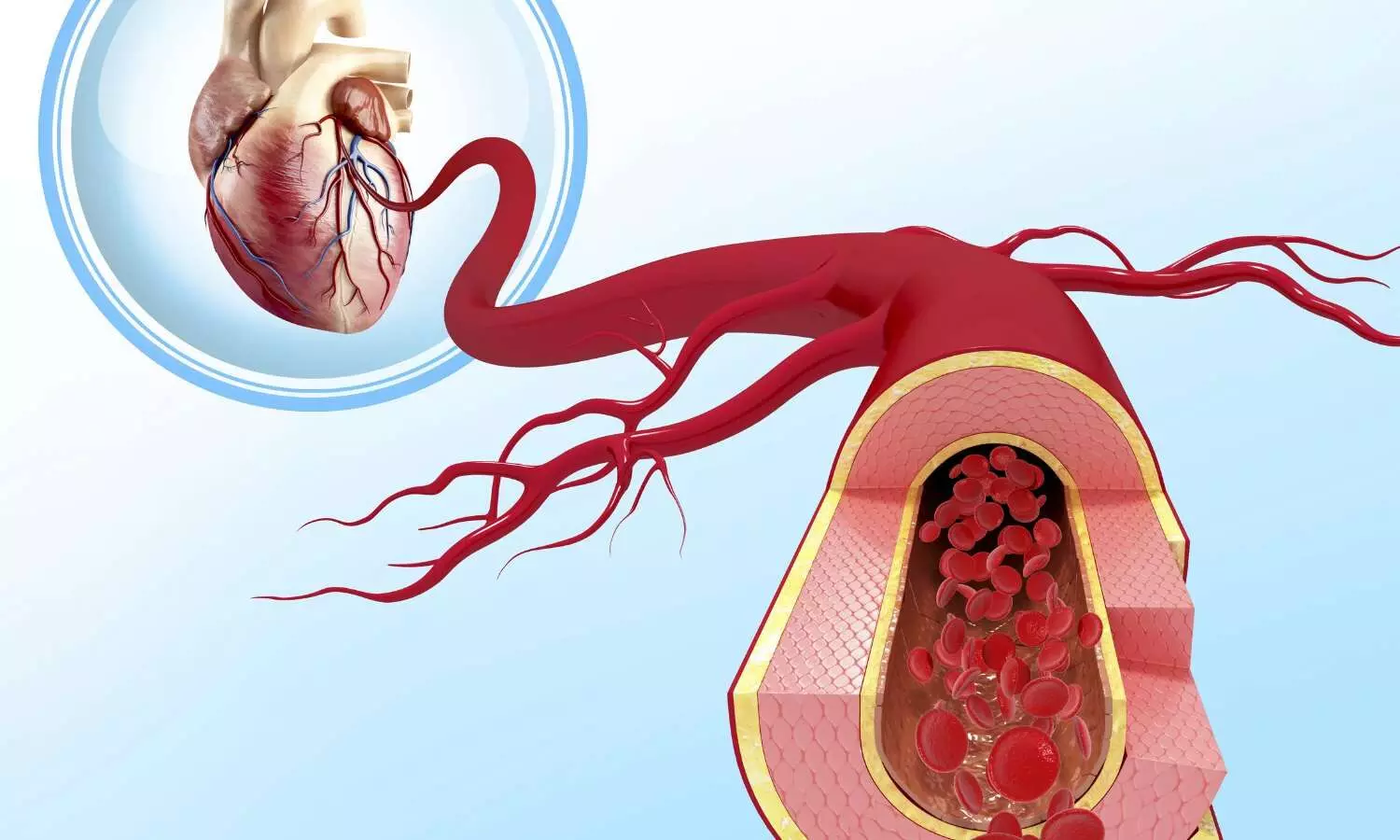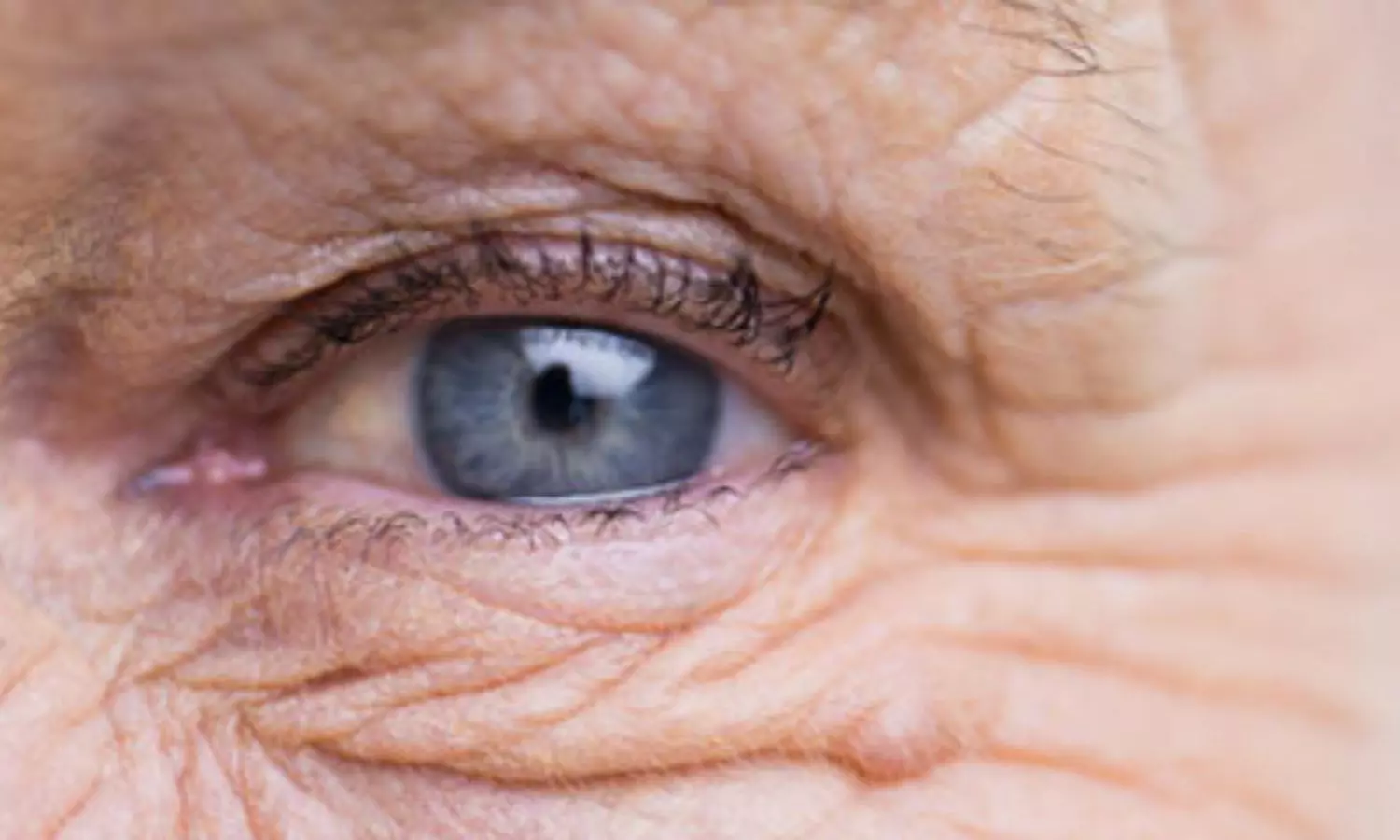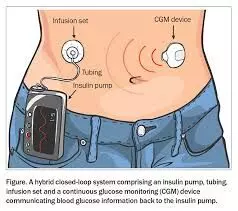Heart transplant patients need more support in managing severe symptoms, researcher says
Powered by WPeMatico
Powered by WPeMatico
Powered by WPeMatico

Kolkata: In a recent development, the Sealdah Court in West Bengal on Monday framed charges against Sanjay Roy in connection with the rape and murder of a medical student at RG Kar Medical College and Hospital.
The charges were framed under sections of the Bhartiya Nyay Sahita, and the trial is set to begin on November 11. This case has drawn significant attention due to its serious nature, and the court’s decision marks a major step in the legal proceedings against the accused.
In the wake of this shocking incident, junior doctors have called for the Central Bureau of Investigation (CBI) to take strict action and ensure capital punishment for those responsible. Speaking to ANI, Dr Rajdeep, a junior doctor, emphasized the need for severe consequences, stating, “We want the CBI to take strict action against those involved. Capital punishment should be given to all the accused.” He also urged the CBI to compile a comprehensive chargesheet that includes names not initially mentioned.
Also Read:Kolkata Doctor Rape-Murder Case: CBI files charge sheet, Sanjay Roy sole accused
As November 9 marks 90 days since the incident, Dr. Rajdeep affirmed that protests will continue until justice is served. “On November 9, we will exhibit all the major events that have taken place so far in this case. I want to say that we will not stop; the protest will continue,” he asserted.
Earlier on October 22, junior doctors protesting over the case ended their hunger strike after a two-hour meeting with Chief Minister Mamata Banerjee at the state secretariat, Nabanna. The tragedy unfolded on August 9, when the second-year medical student was found dead in the seminar hall of RG Kar Medical College and Hospital. The incident has ignited protests across West Bengal, with doctors nationwide expressing solidarity with the junior doctors in Kolkata.
Also Read:RG Kar Doctor Rape-Murder Case: CCTV reveals accused Sanjay Roy in corridor with Bluetooth device around his neck
Powered by WPeMatico

Telangana: Natco Pharma has announced that Imtiyaz Basade has been appointed as Senior
Vice President – RAD, Pharma Division, Kothur Unit w.e.f. 4th November, 2024.
Natco Pharma Limited was incorporated in Hyderabad in the year 1981 with an initial investment of INR 3.3 million. With a modest beginning of operations as a single unit with 20 employees, Natco today has eight manufacturing facilities spread across India with modern research laboratories, capabilities in New Drug Development, etc.
Read also: NATCO Pharma Canada arm invests over Rs 67 crore in biotech company eGenesis
Powered by WPeMatico

Kanpur: A 22-year-old nurse was allegedly intoxicated and raped by the director after being held hostage inside a private hospital, police said on Monday. An FIR has been registered, and the accused has been arrested.
It is suspected that the nurse was given a soft drink laced with intoxicants before the assault took place.
According to the PTI report, Kalyanpur’s Assistant Commissioner of Police (ACP) Abhishek Pandey said the woman has been working as a nurse at a private hospital in Kalyanpur for the last couple of months.
Also Read:Ratnagiri horror: Nursing student drugged, raped by autorickshaw driver on way home from hospital
On Sunday evening, she attended a party thrown by the director in the hospital. The accused asked her to stay at the hospital during night hours on the pretext of official work, he said. Around midnight he called her to his room and forcefully pulled her inside and locked the door, the ACP said.
The director took the nurse hostage and allegedly raped her, said another official requesting anonymity.
The accused also threatened the nurse to kill her if she reported the incident to anyone, the official added, news agency PTI reported.
The police have not yet disclosed the identity of the accused.
He was produced before the court following the arrest, the official said the victim’s medical examination would be conducted and she would be produced before the court to record her statement before the magistrate, the police added.
Also Read:Nurse on night duty allegedly raped by doctor at Moradabad Hospital, 3 arrested
Powered by WPeMatico

Researchers have established that electric fans did not reduce core body temperatures of elderly individuals under extreme heat indoors, especially as temperature increased to 33°C and beyond. A recent study was published in the journal JAMA Network by Fergus K. and colleagues.
Electric fans have been suggested as an inexpensive means to reduce heat stress among very elderly individuals aged 65 and older, especially based on earlier biophysical modeling and works in younger adults. This study was designed to determine the effect of exposure to an electric fan on core temperature and heart rate in older adults who were exposed to indoor temperatures similar to those during recent North American deadly heat waves.
The subjects (≥65 years) were exposed to high indoor temperatures of more than 33°C, simulating conditions that are usually experienced during a heat wave. The core temperature and heart rate of the participants were recorded throughout the exposure period while measuring the impact of electric fans use. This would measure if fans can limit the rise in core body temperature and provide cardiovascular relief under such extreme conditions.
The experiment reported a lack of effective cooling by electric fans on peak core temperatures in older individuals exposed to high indoor heat:
Peak core temperature was unaltered by fan use, meaning that it showed inefficient reduction of dangerous heat accumulation in the elderly.
Besides end-exposure core temperature and heart rate declines, these decreases were small and below thresholds for clinical significance.
However, the core temperature and heart rate reduction both were small, without question not more than a marginal effect among subjects, and therefore of no biomedical significance.
These findings are in keeping with previous biophysical models which suggested that cooling by fans had little role to play in reducing body temperature in older individuals at ambient temperatures above 33-35°C.
Thus, electric fans alone cannot be used as a cooling intervention, especially when temperatures rise above 33°C in extreme indoor heat environments. These findings further indicate the alternative cooling solution urgently needed for older adults in a world with rising global temperatures and deadly heat waves.
Reference:
O’Connor, F. K., Meade, R. D., Wagar, K. E., Harris-Mostert, R. C., Tetzlaff, E. J., McCormick, J. J., & Kenny, G. P. (2024). Effect of electric fans on body core temperature in older adults exposed to extreme indoor heat. JAMA: The Journal of the American Medical Association. https://doi.org/10.1001/jama.2024.19457
Powered by WPeMatico

Routine use of an orbital atherectomy device to remove calcium from severely blocked coronary arteries before patients undergo cardiac stenting procedures does not improve outcomes, a Mount Sinai-led study has found.
The results of the ECLIPSE study were announced during a late-breaking trial presentation at the Transcatheter Cardiovascular Therapeutics Annual Meeting on Tuesday, October 29. This is the first large-scale study to study this specific device in severely calcified lesions, and the results support reserving its use for extreme cases.
“Operators across the United States currently have different thresholds for using atherectomy or other advanced lesion preparation techniques when treating severely calcified lesions. While these devices are essential to treat the most extreme cases prior to implanting a stent, it was unknown before this study whether their routine upfront use in patients with severely calcified lesions that are less than extreme would safely improve outcomes after drug-eluting stent implantation,” says study chair Gregg W. Stone, MD, Director of Academic Affairs for the Mount Sinai Health System and Professor of Medicine (Cardiology), and Population Health Science and Policy, at the Icahn School of Medicine at Mount Sinai. “The large-scale, multicenter ECLIPSE trial has shown that the routine use of orbital atherectomy did not lead to greater stent expansion or improve one-year patient outcomes compared to routine balloon angioplasty prior to stenting. Therefore, the use of orbital atherectomy may be reserved for the most extreme cases for which the operator does not believe that balloon angioplasty would be likely to safely cross or pre-dilate the calcified lesion.”
Patients with coronary artery disease-plaque buildup inside the arteries that leads to chest pain, shortness of breath, and heart attack—often undergo percutaneous coronary intervention (PCI), a non-surgical procedure in which interventional cardiologists use a catheter to place stents in the blocked coronary arteries to restore blood flow. Cardiologists first put a balloon through the artery to make the opening big enough for the stent to fit in permanently.
Heavily calcified blockages are more challenging to open with balloon angioplasty, which may lead to stent complications including heart attacks. One option cardiologists use to avoid this in severely calcified lesions is orbital atherectomy-a device from Abbott Vascular, in Santa Clara, California, approved by the Food and Drug Administration for this purpose that fractures and sands the calcium, allowing balloons and stents to better expand. Atherectomy devices (orbital or other types) are used in more than 10,000 patients per year undergoing PCI in the United States, and in up to 10 percent of PCI cases at some hospitals.
Investigators launched the ECLIPSE study to figure out whether routinely using the orbital atherectomy device in severely calcified lesions that might be adequately expanded by balloons only would allow the stent to better expand and improve clinical outcomes. They enrolled 2,005 cardiac patients with 2,492 lesions at 104 sites across the United States and randomized roughly half to receive orbital atherectomy and half to balloon angioplasty; both groups then underwent PCI with drug-eluting stents. The primary endpoints were stent expansion and one-year clinical outcomes.
Researchers used optical coherence tomography (OCT) imaging to assess the stent area in both groups. At the end of the procedure, the stent area was not greater in the atherectomy group compared with the balloon angioplasty group. The minimal stent area at the site of maximal calcification was 7.67 ± 2.27 mm2 in the orbital atherectomy group and 7.42 ± 2.54 mm2 in the balloon angioplasty group, a difference that was not statistically significant. Additionally, orbital atherectomy did not reduce the one-year rate of target vessel failure, which is a combination of cardiac death or myocardial infarction or repeat intervention attributable to the treated vessel. In the orbital atherectomy group, 114 patients (11.6 percent) had target vessel failure, compared with 95 patients in the balloon angioplasty group (9.8 percent), also a non-significant difference.
Among secondary outcomes, there were more cardiac deaths at 30 days after PCI in the orbital atherectomy group compared with the balloon group (eight versus zero). Cardiac death within one year occurred in 30 patients (4.0 percent) compared to 26 patient (2.7 percent) in the balloon angioplasty group, a non-significant difference. There were no significant differences in other major safety outcomes, including vessel perforation or heart attack.
“In this trial, the atherectomy procedure was longer and required use of more guide wires and other interventional devices, more contrast, and more radiation compared with procedures using balloons only for lesion preparation. Given the absence of clear benefit, these results support reserving use of orbital atherectomy for the most extreme cases that the operator does not believe would be safely crossed or dilated with a balloon. Such cases were not included in the present trial,” added Dr. Stone “It is important to note that the event rates were lower in both the balloon and atherectomy groups of patients in whom OCT was used to guide the procedure, consistent with the results from other studies that have shown that intravascular imaging use improves PCI outcomes in complex lesions. Finally, these results apply to lesion preparation with orbital atherectomy only. Whether the routine use of other advanced lesion preparation techniques in severely calcified lesions, including rotational atherectomy or intravascular lithotripsy, would improve stent expansion and clinical outcomes after PCI is unknown.”
Reference:
Treating severe calcification with an atherectomy device does not improve cardiac stenting outcomes, study finds, The Mount Sinai Hospital / Mount Sinai School of Medicine, Meeting: TCT 2024: Transcatheter Cardiovascular Therapeutics.
Powered by WPeMatico

USA: A recent study presented at the annual meeting of the American Academy of Ophthalmology, which took place from October 18 to 21 in Chicago, found that cardiac arrhythmias, including myocardial infarction and atrial fibrillation, are linked to age-related macular degeneration (AMD).
Significant cardiovascular conditions, such as myocardial infarction, cardiac valve disease, and ischemic stroke, have been linked to age-related macular degeneration and subretinal drusenoid deposits (SDDs). In light of this, R. Theodore Smith, M.D., Ph.D., of the Icahn School of Medicine at Mount Sinai, and colleagues examined the relationship between cardiac arrhythmias and SDDs and the impact of heart failure on cardiac index (CI).
For this purpose, the researchers conducted a study involving 55 cardiac patients aged 49 to 91 at Mount Sinai Hospital. The patients underwent spectral domain optical coherence tomography scans to assess the presence of subretinal drusenoid deposits. Patient charts were then reviewed for cardiac index and arrhythmias.
The following were the key findings of the study:
“Patients with common arrhythmias, such as atrial fibrillation, or those with serious cardiovascular conditions like myocardial infarction and stroke should undergo immediate optical coherence tomography of the macula to check for subretinal drusenoid deposits. If SDDs are detected, a retinal referral is warranted,” Smith stated to Elsevier’s PracticeUpdate.
He continued, “A large cohort of age-related macular degeneration patients with SDDs and/or typical drusen should be evaluated for cardiovascular disease through electrocardiograms to check for arrhythmias, as well as cardiac and carotid ultrasound tests for other serious vascular issues. This approach will clarify the true risk associated with SDDs compared to drusen regarding CVD and help identify previously undetected cardiovascular problems, particularly among Black, Hispanic, and female populations, where underdiagnosed CVD is a significant public health concern.”
“Cardiac arrhythmias, such as atrial fibrillation, are linked to subretinal drusenoid deposits in age-related macular degeneration. These arrhythmias can lead to heart failure by disrupting the relationship between ventricular output and filling, potentially contributing to SDDs through ocular hypoperfusion. The observed decrease in cardiac index in patients with SDDs supports this mechanism. Furthermore, SDDs may serve as a biomarker for serious heart disease, highlighting a critical concern for underserved populations and women,” the researchers concluded.
Reference: https://aao.apprisor.org/apsSession.cfm
Powered by WPeMatico

Hybrid closed-loop insulin therapy prevents low night-time blood glucose levels among breastfeeding mothers with type 1 diabetes suggests a study published in the Diabetologia.
This study aimed to describe the relationship between breastfeeding episodes and maternal glucose levels, and to assess whether this differs with closed-loop vs open-loop (sensor-augmented pump) insulin therapy. Infant-feeding diaries were collected at 6 weeks, 12 weeks and 24 weeks postpartum in the trial of postpartum closed-loop use in 18 women with type 1 diabetes.
Continuous glucose monitoring (CGM) data were used to identify maternal glucose patterns within the 3 h of breastfeeding episodes. Generalised mixed models adjusted for breastfeeding episodes in the same woman, repeat breastfeeding episodes, carbohydrate intake, infant age at time of feeding and early pregnancy HbA1c. Results: CGM glucose remained above 3.9 mmol/l in the 3 h post-breastfeeding for 93% (397/427) of breastfeeding episodes.
There was an overall decrease in glucose at nighttime within 3 h of breastfeeding (1.1 mmol l−1 h−1 decrease on average; p=0.009). A decrease in nighttime glucose was observed with open-loop therapy (1.2 ± 0.5 mmol/l) but was blunted with closed-loop therapy (0.4 ± 0.3 mmol/l; p<0.01, open-loop vs closed-loop). There is a small decrease in glucose after nighttime breastfeeding that usually does not result in maternal hypoglycaemia; this appears to be blunted with the use of closed-loop therapy.
Reference:
Donovan, L.E., Bell, R.C., Feig, D.S. et al. Glycaemic patterns during breastfeeding with postpartum use of closed-loop insulin delivery in women with type 1 diabetes. Diabetologia 67, 2154–2159 (2024). https://doi.org/10.1007/s00125-024-06227-z
Powered by WPeMatico

A trailblazing review proposed
that poor oral health particularly periodontal disease can cause atherosclerotic
cardiovascular disease (ASCVD) due to shared biological pathways like inflammation,
immune response, and bacterial translocation. The study titled ‘Oral Health and
Atherosclerotic Cardiovascular Disease: A Review’ was published in the American
Journal of Preventive Cardiology.
Periodontal disease (PD) is a
prevalent chronic infection of the gums and the surrounding bone seen in older
adults that begins with the accumulation of dental plaque leading to gingivitis.
Gingivitis, an inflammatory response can progress to PD potentially causing
bone loss and tooth damage due to deeper penetration of the bacteria. Risk factors
like smoking, diabetes, and poor oral hygiene many of which are also atherosclerotic
cardiovascular risk factors may worsen the progression of PD. Additionally, an
imbalance in oral flora (dysbiosis) can lead to bacteremia, the spread of
bacteria in the bloodstream, prompting systemic inflammation that might link PD
to ASCVD.
Mechanisms by which PD can lead
to ASCVD:
Supporting Data:
Literature in the past has also
observed a positive association between PD and ASCVD with PD doubling the risk
of myocardial infarction, peripheral arterial disease, and ischemic stroke. Oral
health can have a long-term impact on vascular health as pediatric Oral
infections are linked to increased carotid artery thickness in adulthood.
Thus, the researchers highlight that
poor periodontal health can increase the risk of cardiovascular diseases. The
authors call for increased awareness and preventive measures, especially in
lower socio-economic areas where the risk of PD causing ASCVD is higher. Further
research is needed to justify the etiology and the potential benefits of
periodontal treatment in reducing cardiovascular diseases.
Further reading: Gianos E, Jackson EA, Tejpal A, et al. Oral health and atherosclerotic cardiovascular disease: A review. Am J Prev Cardiol. 2021;7:100179. Published 2021 Apr 5. doi:10.1016/j.ajpc.2021.100179
Powered by WPeMatico
